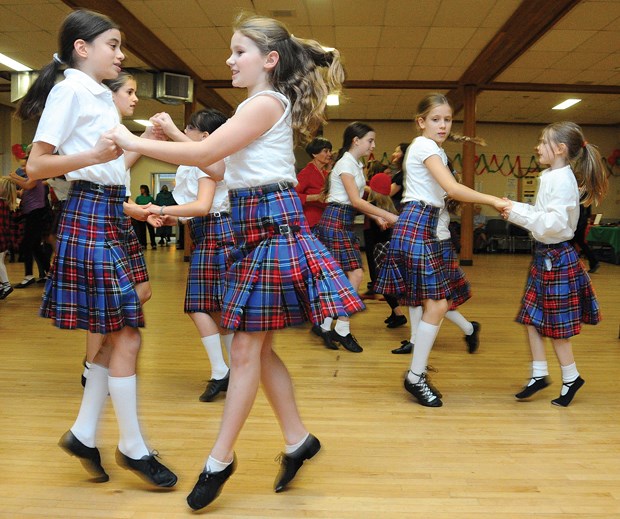Colette Hamner is with the Delbrook Scottish Country Dancers. She has been doing Scottish country dancing for 50 years, and has taught kids through the North Vancouver Recreation Commission for 25 years. She recently answered questions from the North Shore News about this unique form of dance.
1. How would you describe Scottish country dancing?
Scottish country dancing is the ballroom dancing of Scotland. It is danced in the castles and in the cottages. The major universities in Scotland all have performance teams. Scottish dancing tells stories, it commemorates special events, and it keeps a cultural heritage and music alive. While it is not a competitive dance form, there are Scottish dance teams and classes all over the world.
2. Is the dance you do more traditional or is it more modern?
Both. Many of the dances have been around for hundreds of years, but new dances are written yearly. In fact, the students (at the recreation centre) this year have written and submitted a dance for consideration to be published. This was a competition open to young dancers only and was submitted to the Royal Scottish Country Dance Society in Edinburgh, Scotland, in November 2014. We hope to hear back in the spring if the dance has been successful.
3. What type of music do you use for it?
We mostly use Scottish dance music (reels, jigs and strathspeys) as the timing has to fit the steps, which are traditional. However, we have danced to modern pop music if we are choreographing a dance. This is another skill the children learn. They create and perform dances, and they learn to work as a team and support each other as a group. There is no place for ego and in all the years I have taught, there has never been competition or ill will between the members of the group.
4. Is this type of dance difficult to learn?
Everyone is welcome, and as with any skill it takes years to perfect. No, it is not difficult to learn and people will be dancing from the first class onwards. But like learning how to play the piano or drive a car, it takes time to develop the grace and the strength to do the dances well. Scottish dancing is a fantastic workout. It is highly aerobic and a great way to get fit.
5. Is it similar to any other type of dancing?
It is social dancing and has been compared to square dancing in some of its movements and formations. However, it is a formal dance and I think the best way to describe it is a cross between highland dancing (which traditionally is only for men and is very warlike), and square dancing.
6. Are there traditional outfits or costumes worn with Scottish country dancing?
Not really. For beginner dancers, comfortable clothing and soft shoes (ballet type shoes) are all that is needed. As people progress, they may want to buy a kilt, and for those who join demonstration teams, there is generally a team outfit. The men will always wear kilts for demonstration purposes and the ladies have more flexibility. Long white dresses and tartan skirts are common outfits. Some of the young people wear jeans or shorts or even medieval costumes. The list is lengthy.
7. What do you like about Scottish country dancing?
The thing I love about Scottish country dancing the most is that everyone can do it. It is inclusive to all. Even more, it is multi-generational. We have two main parties a year: a Christmas party and a spring tea dance. At these events (held at the North Vancouver Recreation and Cultural Centre) there can be up to four generations dancing together. Grandparents dance with their little ones, teenagers with their parents. It is amazing to see all the different ages mingling and enjoying an activity together.
Dancing is wonderful exercise and teaches students so much more than fancy footwork. Grace, poise and an understanding of where one is in relation to the physical world, how to move through a room gracefully, and a way of building confidence and self-awareness are a few of the benefits of dancing.
8. Is Scottish country dancing suited to a certain type of person or age group or can anyone do it?
Anyone and everyone is able to dance. Generally we like students to be at least six years old so they have the muscle maturity to do the steps. I have had deaf students, taught someone who uses a wheelchair, and had a student celebrate her 90th birthday in one of my classes. However, the children's classes range in age from six-19 years.
9. Do the students do any performances?
Absolutely! The children perform at various venues around the Lower Mainland.
Scottish country dancing is offered through the North Vancouver Recreation Commission. Check out northvanrec.com/programs/dance for more information.
This story originally appeared as part of the North Shore News regular Registration Guide special section.



